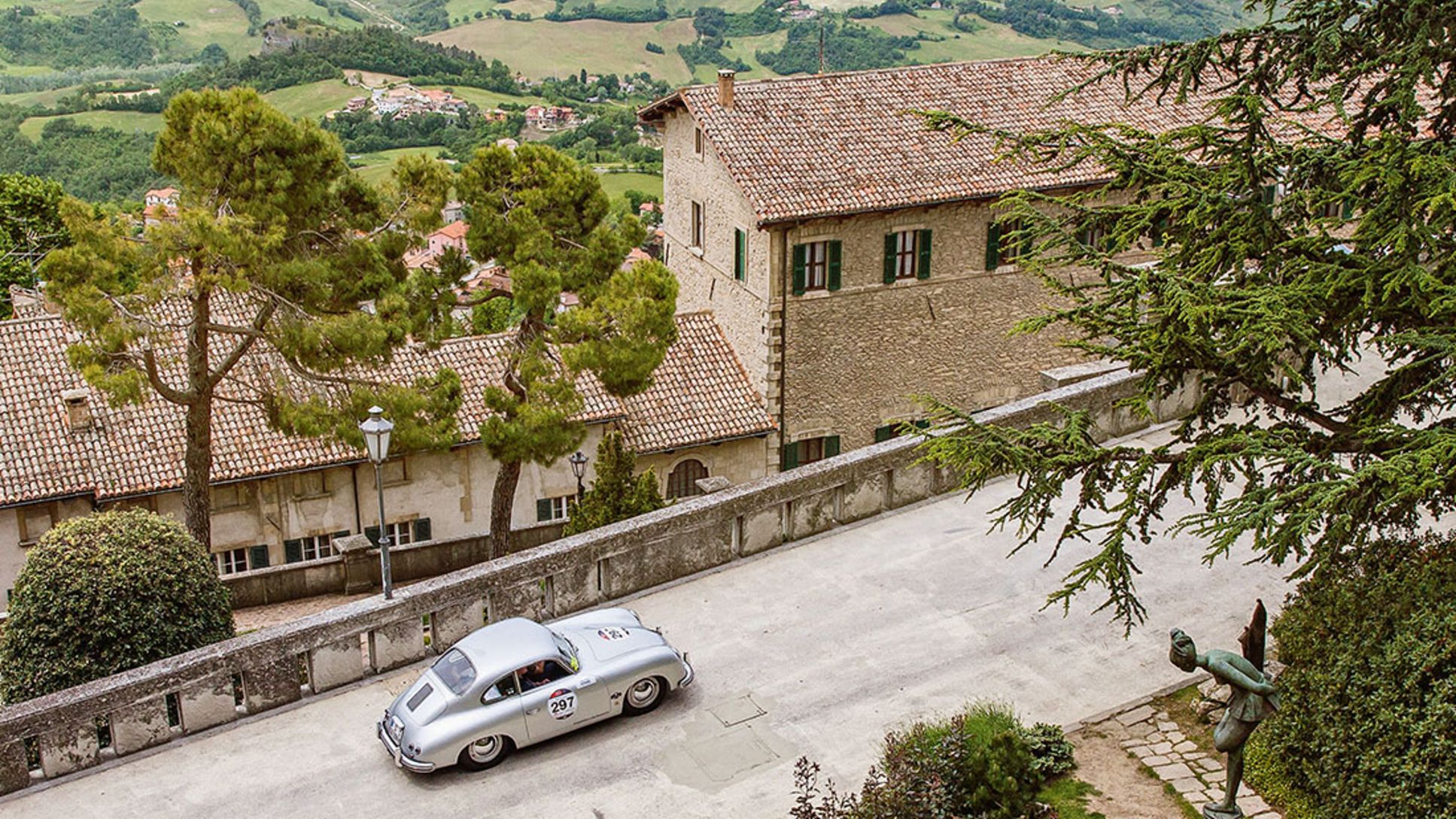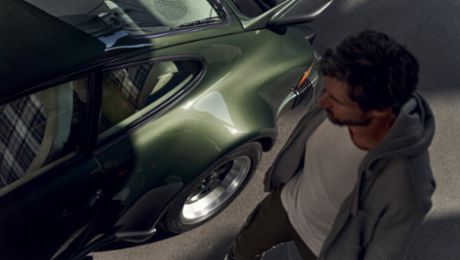A race that was considered the toughest in the world from 1927 to 1957. Now it has become one oft the most prestigious classic car events, where once upon a time Porsche made history. It cannot be absent today, either – it’s a question of honor.
No later than when five cars squeeze into two lanes mirror to mirror, step on the gas at stop signs and red lights and are spurred on by uniformed poliziotto from the roadside, it is clear that the word "regularity race" is marvelously versatile in its interpretation. Because at the Mille Miglia, the winner is not the first across the finish, but the team that collects the fewest penalty points over the course of eighty stages and various passage and time controls.
The Counts Franco Mazzotti and Aymo Maggi and their friends Renzo Castagneto and Giovanni Canestrini were certainly not thinking of regularity when they started their first Mille Miglia on 26 May 1927. Rather, their aim was to shave off time and reach top speeds. From Brescia to Rome and back.
The focus at Mille Miglia is on reliability
Previously, the distance was achieved in the form of a figure eight – in just one day (!) up until 1957 – today the road book guides you around the boot shaft. Just as long as it adds up to about one thousand miles, which fly by easy peasy at an average speed of 103.5 mph. No, actually it has been a long time since the still undefeated value was achieved by the winning team of 1955 at the 23rd Mille Miglia. Not bad, considering that even then, spectators were barely an arms’ length away at the roadside.
More than seventy years later, things are a lot gentler on man and material. Gone are the days of the nonstop full throttle, the focus is on the reliability and regularity of the race. On being there. On crossing the finish line. This year, 400 out of 435 classic cars managed to make it, some of which are worth millions of dollars. Before the finish line could be crossed at the end, quite a few trials by fire had to be conquered in the many hairpin bends of the Futa and Raticosa passes. And every time you come up behind a "non-vintage" car – the roads are not closed to the public – after just a few seconds you get the terrible feeling you have after waiting in line at the supermarket for an hour. Impatience, tingling in the accelerator foot, and despite it all, a bit of competitive desire to win. Even though it’s all about being there. As always. About Dolce Vita. And also a little bit about staying awake, sharpening the senses and continuing in the dark – after all, 1,000 miles can’t be conquer- ed just by day.
Tradition and history
The rules are strict. For example, only cars may participate that had already attended the historic races from 1927 to 1957. The organizers aren’t flexible in this regard. After all, the road to the starting ramp is not paved with dollar signs, but with tradition and history. And there is a lot to prove before the classic cars are allowed on the road. If you have never been along for the ride at the Mille Miglia, you can still have the chance to prove a sports history of international importance so that your classic car can participate.
No problem for the Porsche Museum, which features eight of fourteen Porsche models eligible for the Mille Miglia. Seven of them are always ready to go. On 15 May 2014, Stuttgart once again lined up at the start with unique vehicles, pilots and co-pilots. Dr. Wolfgang Porsche, Chairman of the Supervisory Board, together with his son Ferdinand Porsche, drove a 1955 356 Speedster 1500 through the curvy regions of Lombardy, Emilia-Romagna, Veneto, Lazio, Umbria, Marche and Tuscany.
Racing legend Jacky Ickx crossed the different weather zones together with the CEO of Chopard, Karl- Friedrich Scheufele, in a 1957 Porsche 550 A Spyder – another vehicle from the successful history of the brand, with a demonstrably exciting racing history in the United States. As part of the "Rolling Museum", the men from Zuffenhausen also presented two coupes in Italy: a 1954 Porsche 356 1500 coupe and a 356 A 1600 coupe that had already raced at the Mille Miglia in its year of construction 1956. It will probably survive some of us as well.
At the very end of the initially four-day classic car event, after you have received the last important stamp and have crossed the finish line, you feel a bit like having conquered 20,000 feet without oxygen bottle. Breathless and infinitely proud. Looking back once more reverently on the car that allowed you to catch the Mille Miglia fever. Remembering the clacking of the mechanical odometer and the footwell heated by the engine and transmission. Thinking of the tireless service team, that not only regularly checked the boiling point of the brake fluid, but polished away every little flyspeck from the bumper while you rested from your glorious efforts. A hero – not like Hans Herrmann, who went under closed railroad crossings crouched in a Porsche 550 Spyder – but at least one who never even thought about giving up. Not for a second.
Info
Text first published in „rampclassics", issue 4
text: Christina Rahmes // photos: Markus Leser


